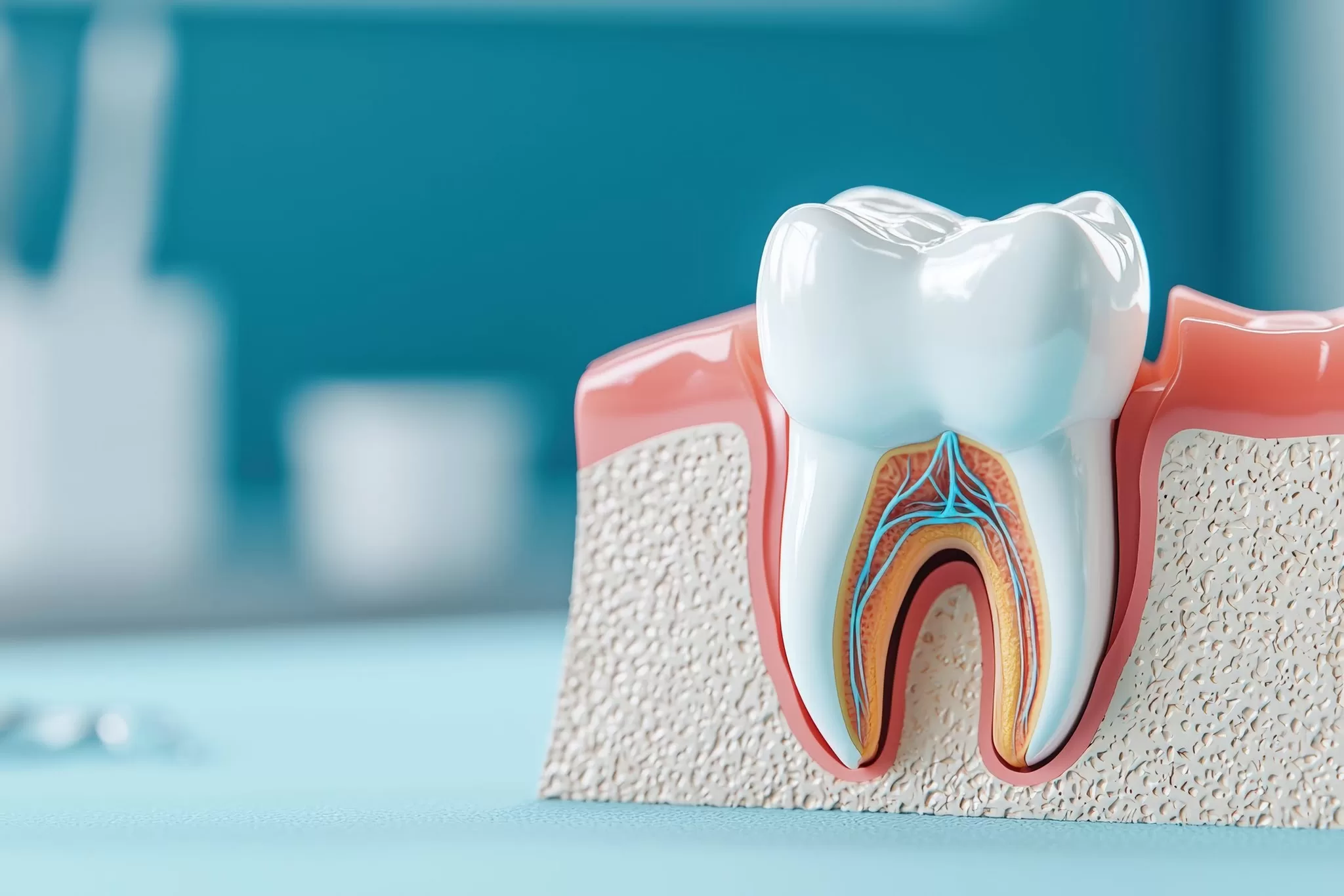Canadian Dental Care Plan (CDCP) patients welcome. Learn More

Endodontics (Root Canal)
Root canal treatment is a procedure used to save teeth that have been severely damaged or infected. When the pulp (the nerve) inside a tooth becomes diseased or injured and can’t heal on its own, the pulp dies. The most common causes of pulp death are a fractured tooth or a deep cavity, which can expose the pulp to bacteria from saliva, leading to an infection. If the damaged or diseased pulp isn’t removed, the infection can spread to the tooth and surrounding tissues, potentially requiring tooth extraction.
Step 1
An opening is made in the tooth to remove decay and expose the pulp, which is the tooth’s soft nerve center. This provides access to the root canals.
Step 2
In some cases, a pus-filled abscess may form at the tip of the tooth’s root. However, in acute pulpitis, there may be internal swelling instead. The infected pulp and any abscess are carefully cleaned out using special files, similar to small “pipe cleaners.”
Step 3
The root canals are then thoroughly cleaned and shaped. Depending on the condition of the tooth, this step may take one or multiple visits to ensure complete removal of the infection.
Step 4
Once the canals are cleaned, they are permanently filled and sealed to prevent future bacterial infection. A temporary filling is placed to protect the tooth until the final restoration.
Step 5
After the infection is cleared, the missing tooth structure is restored with a filling, and the tooth is returned to normal function. Since teeth that undergo root canal treatment are more prone to cracking, we recommend placing a crown to restore the tooth’s strength and natural appearance.